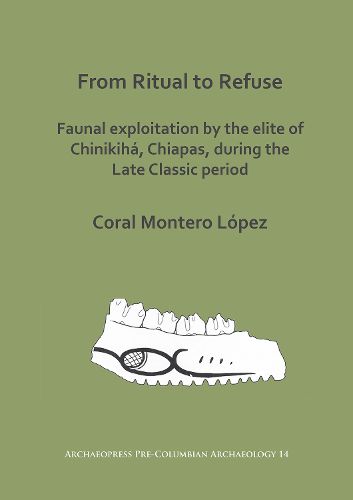Readings Newsletter
Become a Readings Member to make your shopping experience even easier.
Sign in or sign up for free!
You’re not far away from qualifying for FREE standard shipping within Australia
You’ve qualified for FREE standard shipping within Australia
The cart is loading…






From Ritual to Refuse explores the faunal exploitation by the Maya elite at the site of Chinikiha, Chiapas, during the end of the Late Classic period (AD 700-850) by applying zooarchaeological and statistical analyses to a faunal assemblage located in a basurero or midden behind a palatial structure at the core of the site. This deposit has been interpreted as the result of one or various feasting events. The aim is to investigate temporal changes of function, more specifically during periods of increasing political competitiveness. Moreover, these analyses suggest that there is a change in the use of faunal resources, from a ritual pattern to a more general refuse deposit. The results from the zooarchaeological analysis are supported by a dietary analysis using 13C and 15N stable isotopes conducted on human and faunal samples. The results from the faunal assemblage suggest that there was a constant supply of animals for ritual and non-ritual uses, and that these animals were mostly obtained in the wild.
$9.00 standard shipping within Australia
FREE standard shipping within Australia for orders over $100.00
Express & International shipping calculated at checkout
From Ritual to Refuse explores the faunal exploitation by the Maya elite at the site of Chinikiha, Chiapas, during the end of the Late Classic period (AD 700-850) by applying zooarchaeological and statistical analyses to a faunal assemblage located in a basurero or midden behind a palatial structure at the core of the site. This deposit has been interpreted as the result of one or various feasting events. The aim is to investigate temporal changes of function, more specifically during periods of increasing political competitiveness. Moreover, these analyses suggest that there is a change in the use of faunal resources, from a ritual pattern to a more general refuse deposit. The results from the zooarchaeological analysis are supported by a dietary analysis using 13C and 15N stable isotopes conducted on human and faunal samples. The results from the faunal assemblage suggest that there was a constant supply of animals for ritual and non-ritual uses, and that these animals were mostly obtained in the wild.